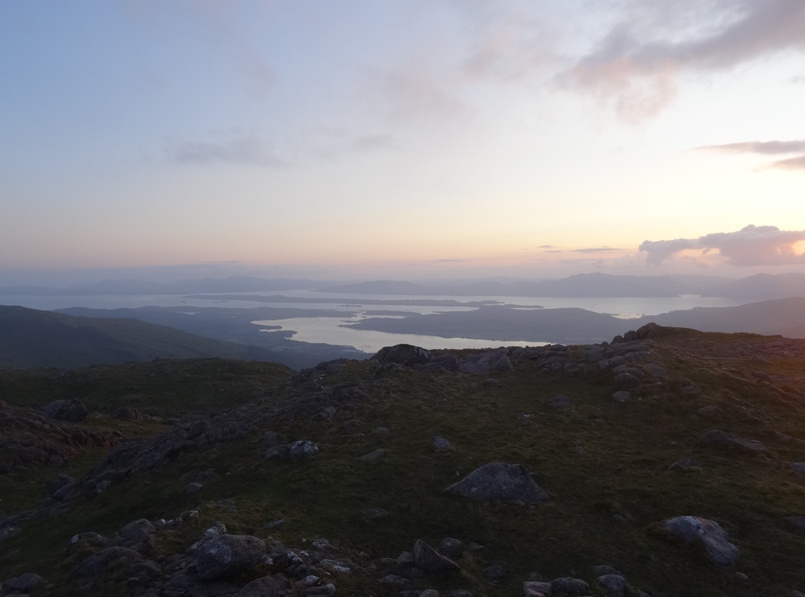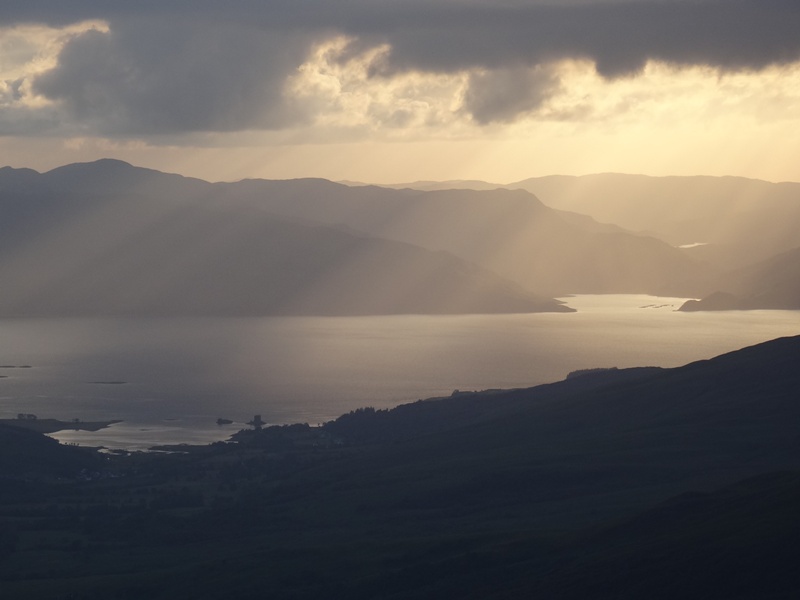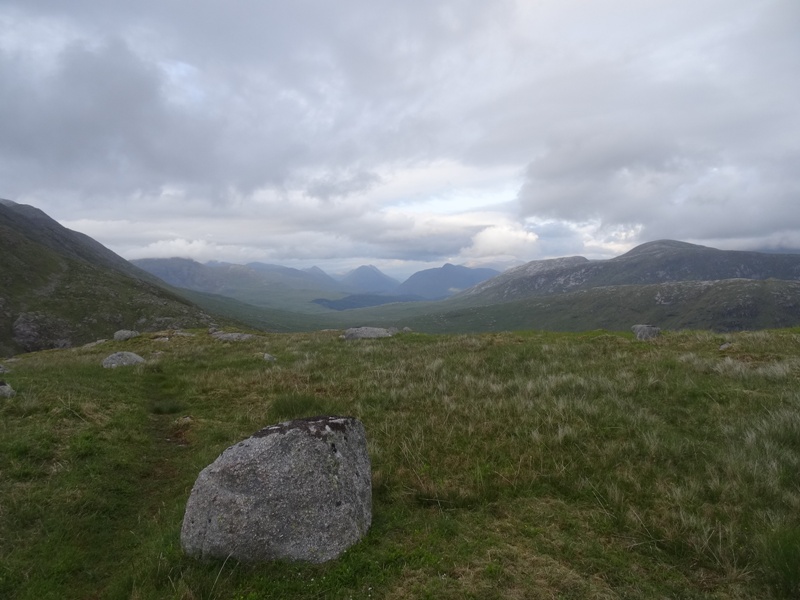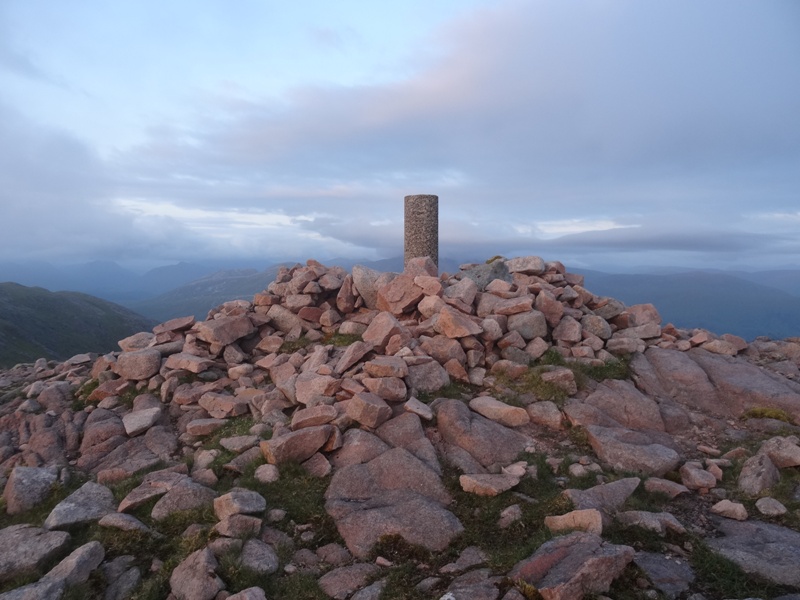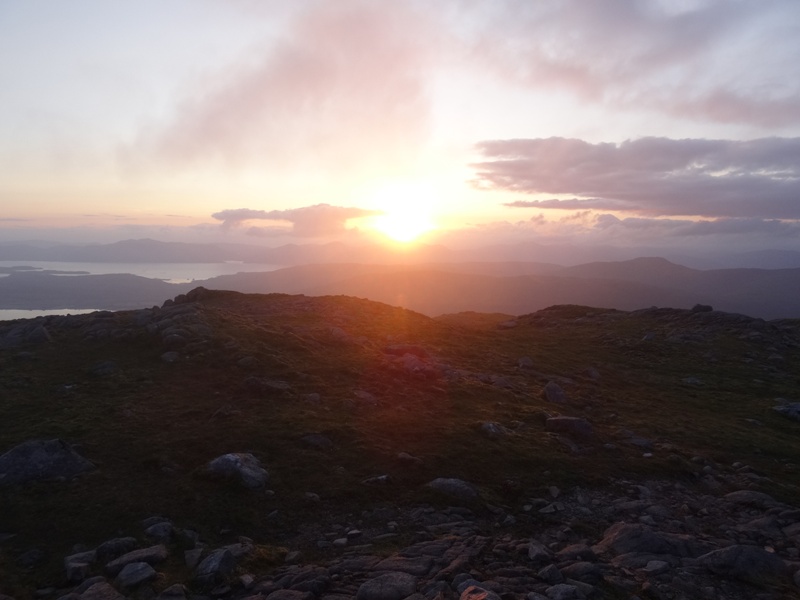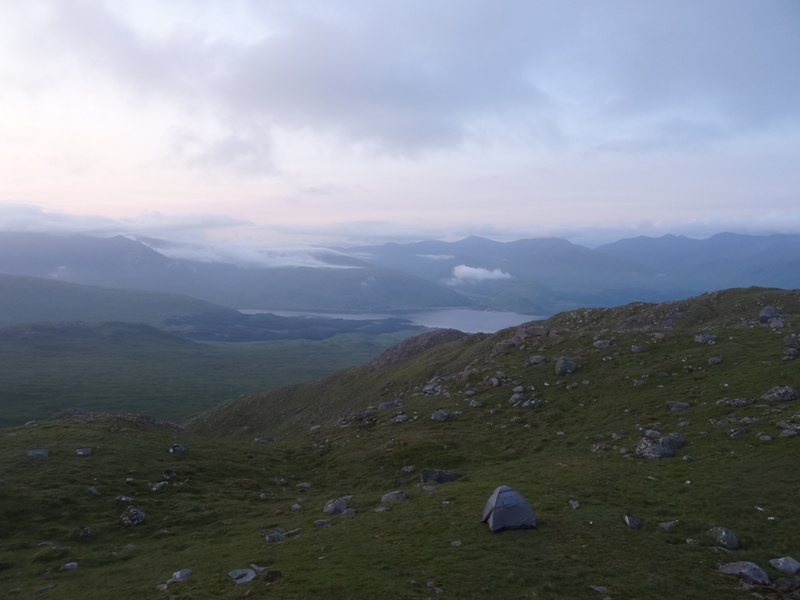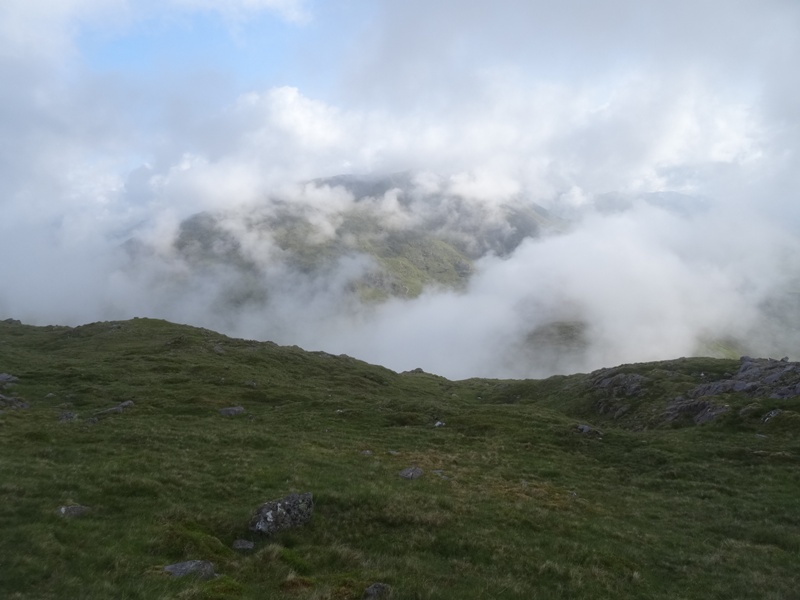Scotland Travel Blog June 2023
”Summer Solstice on a Scottish Mountain”
” Hogmanay” is a big event in Scotland, but I’ve never been able to get all that excited by the New Year celebrations. To me, it feels like a lot of forced joviality about a clock striking midnight. It’s not like anything much changes.
Maybe it’s some lingering Pagan mindset from my Pictish and Celtic roots, but the Summer Solstice has always felt much more significant to me. I love the long light nights of a Scottish summer and the build up to the longest day fills me with anticipation. It’s like the cycle of life, death and rebirth, with the Summer Solstice marking the peak of the year.
For a long time, I’ve wanted to spend the night of the Summer Solstice at the top of a Scottish mountain. I liked the idea of being alone in the wilderness whilst witnessing the sunset and sunrise on the shortest night. It’s one of my “Bucket List” items and this month I did it.
It was especially significant to do it this year as I lost both my parents in 2022, and that makes you realise how precious your time on earth is. I’m now much more aware that I can’t defer doing things that my body might not be able to do as I get older.
So no ifs, or buts, the night of the 21st June 2023 was going to be spent on top of a mountain somewhere in Scotland.
But which Mountain?
Well, the choice of mountain had to tick a few important criteria:
- The hike to the summit had to be around 3 hours as we’d be carrying a tent, sleeping bags, etc.
- It had to be within a 3hr drive from home as Junior was coming with me after school and I wanted to start the hike around 6 - 6:30 pm as we ideally wanted to be at the summit around 9:30 to get a good sunset before the official sunset time of 10:16 pm.
- It would ideally be on the West Coast so we could have a good sunset looking out to sea and some islands.
- It had to have a good 360-degree view and ideally some distinctive landmarks in sight.
- It shouldn't be too popular as we wanted to have the mountain all too ourselves.
- It had to be reasonably flat at the summit and not too rocky so that we could pitch a tent.
- And it would be handy if there was some place near the start where we could get an early dinner before heading up the hill.
After some research, I decided upon Creach Bheinn in Argyll, near Appin. The summit is on a large flat plateau, which is grassy with a few rocky outcrops.
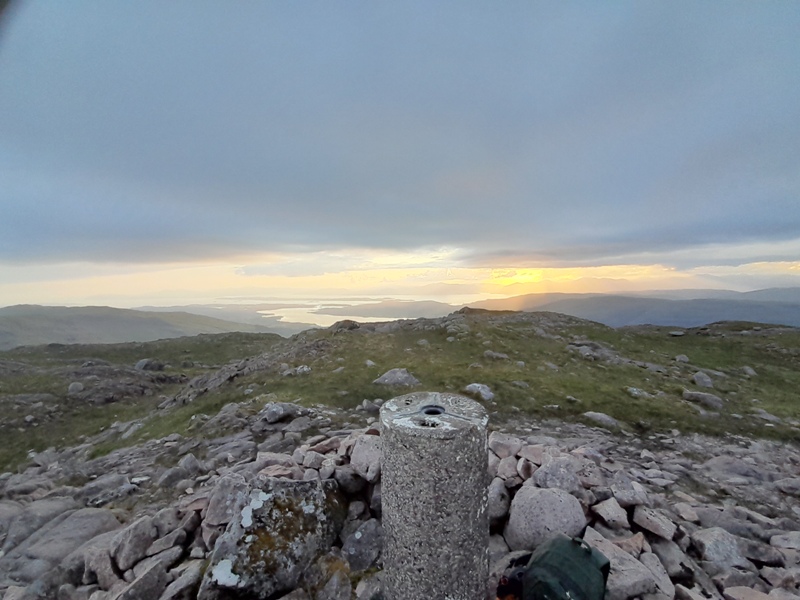
You get magnificent views to the west over the island of Lismore with the Isle of Mull behind it. The mountains of Sunart give a backdrop to the setting Sun, and the Sun rises behind the distant peaks of Glen Coe to the east.
To the south of the summit, you look down on the waters of Loch Etive which can be mirror-smooth in the still morning air.
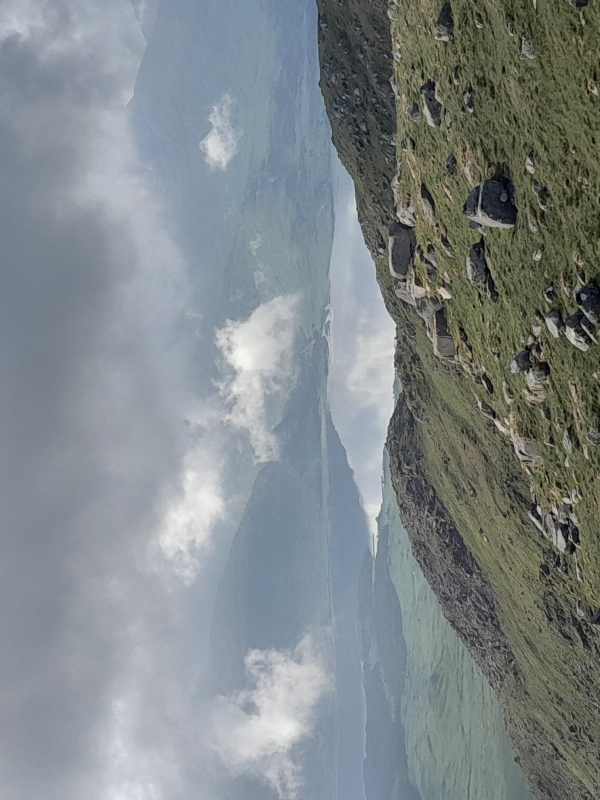
And clearly visible on the coastline below, is the distinctive silhouette of Castle Stalker which stands on a small island in Loch Laich.
Creach Bheinn rises to a height of 810 metres / 2657 feet, so it’s 104 metres / 343 feet short of being a Munro. But the path starts from close to sea level so you feel every one of those metres, especially when you’re lugging 10kg of kit with you.
The path to the summit isn’t well defined which is probably because it isn’t quite high enough to be classed as a Munro and thus doesn’t get as much traffic as nearby Ben Sguilard which stands at 937 metres thus making it a must for Munro baggers.
I was therefore fairly confident that we’d have Creach Beinn to ourselves, but was a bit less confident about our ability to find our way to the top without a clearly defined path and fading daylight.
What You Need to Pack for a Mountain Top Camp
I’ve camped out in remote Scottish glens before now, but this was my first attempt at camping overnight on a mountaintop.
The weather forecast suggested an overnight temperature of 10 - 12 centigrade, moderate wind speeds of around 10 knots, some light cloud cover and dry conditions. That all sounded fine, but you have to remember that the weather forecast isn’t talking about the conditions on an exposed hilltop.
I didn’t take a thermometer, or anemometer with me to take measurements, but I can tell you that it was definitely windier and colder than that at the top. Out of the wind, I reckon it was about 7 - 9 Centigrade, but with the brisk breeze at the summit it felt close to freezing and my fingers were numb after trying to film the setting sun for 15 mins.
So the essentials that you are going to need if you plan to spend the Summer Solstice on a Scottish Mountain are:
- A sleeping bag that is rated down to at least 0C. It won’t get that cold inside your tent, but it will get down to single-figure temperatures.
- A lightweight tent. We used a 2 man tent that weighed in at 2.5 kg and packed up small enough to fit inside my rucksack.
- A good quality camping roll mat. It’s worth spending the money to get something good as this will make a big difference in how well you sleep. Mountain tops are rocky and you need some good padding to get a good sleep.
- A litre of water. For obvious reasons, you’ll not find any streams near the summit so you need to carry in what you need.
- A change of underwear / t-shirt / socks. It might be colder than you expect, but you will get sweaty hiking up a hill so it’s a bonus to have a clean dry t-shirt, socks etc to change into before you get into your sleeping bag.
- An eye mask. It never gets really dark during a Scottish summer night, so you’ll probably appreciate having one to black out the light.
What You Don’t Need to Pack for a Mountain Top Camp
Keeping the weight down is important if, like me, you are on the wrong side of 50 and aren’t as fit as you used to be.
Some of the things that we packed that we never needed were:
- Snacks - We had a big meal at 5:30 pm and started the hike at 6:15 pm. Everyone’s metabolism is different, but we didn't feel the need to eat again until we were off the mountain the following morning. So you’ll probably get by with just a few high-energy bars.
- A torch - It doesn’t really get dark enough in Scotland during the Solstice for you to need a torch. In saying that, it would be prudent to have one in case you need to signal to a mountain rescue team.
- Something to read - If you stay up to watch the sunset, you’ll not be getting to sleep until ~10:30 pm. And if you want to catch the sun as it rises again the next morning, you’ll need to be awake at around 4:10 am. That gives you less than 6 hours of sleep, and you’ll need every minute that you can get, so don’t expect to be in the mood for a bedtime book.
What’s it like to camp on a Mountain?
I’ve climbed lots of Scottish mountains in all sorts of weather from snow to scorching sunshine. I wouldn’t describe myself as an experienced climber and I know my limits, so I admit that I undertook this adventure with some apprehension about how it would go.
There’s no doubt that it does feel strange to be heading up into the mountains when everyone else is coming down. When I say everyone else, I’m referring to 6 people that we passed just as we started the climb at 6:15pm.
I had my 12-year-old son with me for company (he’s up for most things that involve a day off school), but I could sense he was getting tired and a bit worried when the sun was going down and we still hadn’t reached our destination. By that stage, we had crossed the “Rubicon”, and were committed to camping on the mountain overnight as the descent in the fading light would have been too difficult.
My own energy was flagging after 3 hours of hiking, but it was uplifting to finally reach the trig point and take in the wonderful sunset views over the Argyll coast.
Unfortunately, my son tells me that I missed the most spectacular part of the sunset as I was down below frantically trying to unpack the tent whilst he stayed at the summit awestruck by the light show.
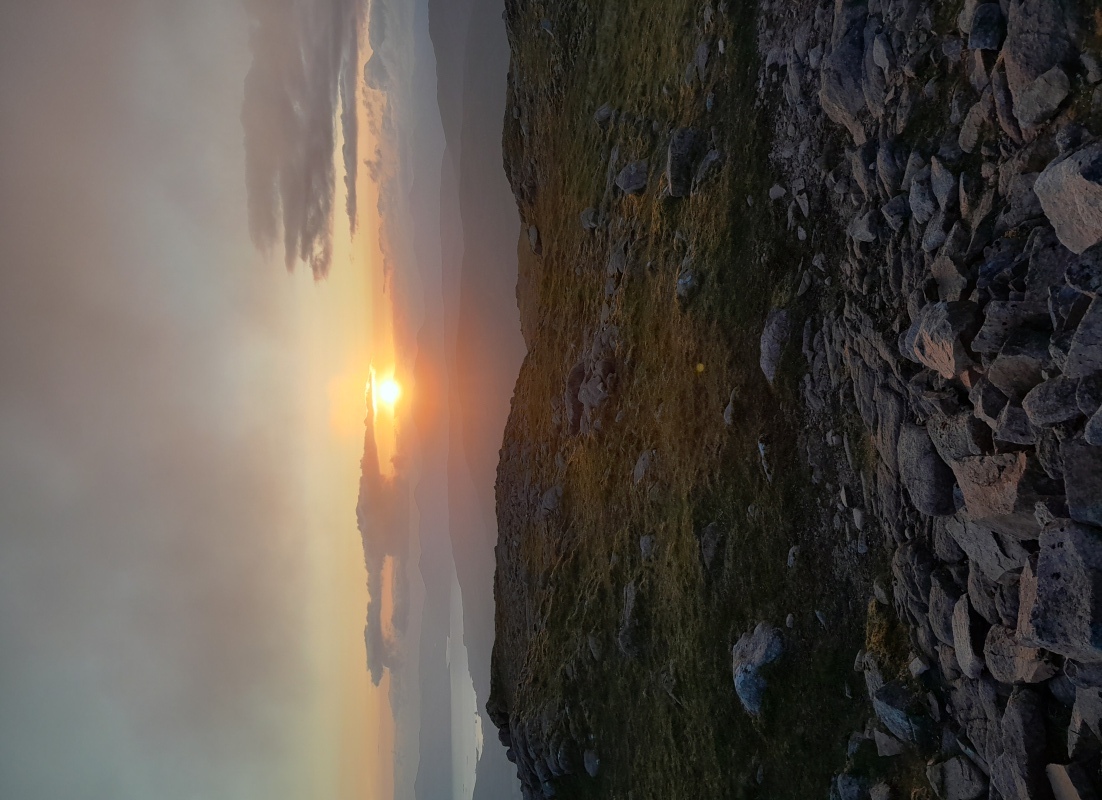
Hopefully, these pictures convey something of the magic!
Our tent was a relative breeze to erect and we had it all up and secured within ~15 minutes. Once the tent was up, we immediately felt happier and more at home in our wild and inhospitable environment. That is until we tried to bed down for the night.
What looked to be the flattest and grassiest piece of ground near the summit was actually sloping downhill at just enough of an angle to make our sleeping bags shoot down our roll-up mats like bobsleighs on a mini Cresta Run. To further add to our discomfort, we soon discovered that under the moss and grass, there was a boulder field of sharp rocks that we had to contort our bodies around in order to find a “comfy” sleeping position. This was not going to be an easy night.
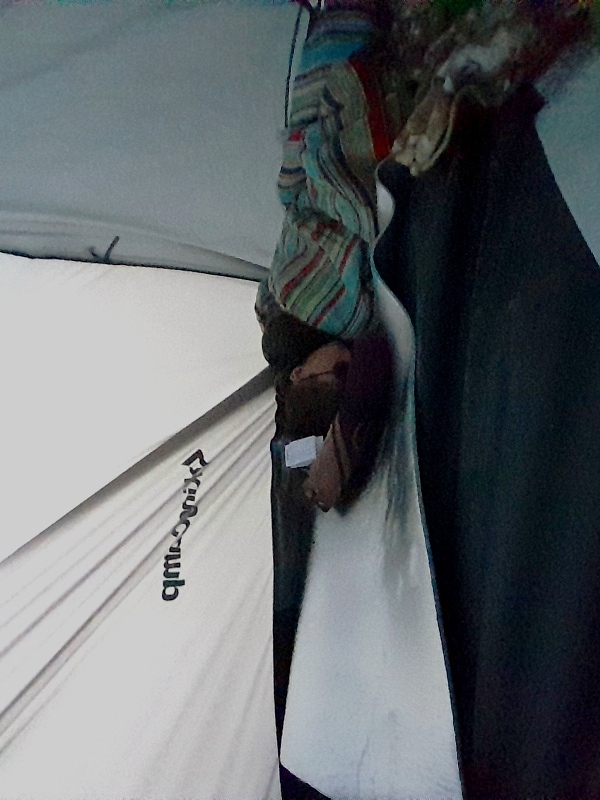
Somewhere between 10:30 pm and 4 am, I must have managed to fall asleep as I was startled from my slumber by the alarm that I had set on my mobile phone. Peeking outside the tent, the skies above were dark and crystal clear. Looking east, the horizon was starting to show a gentle radiance, but a band of clouds sat above the peaks of Glen Coe where the sun should have been rising.
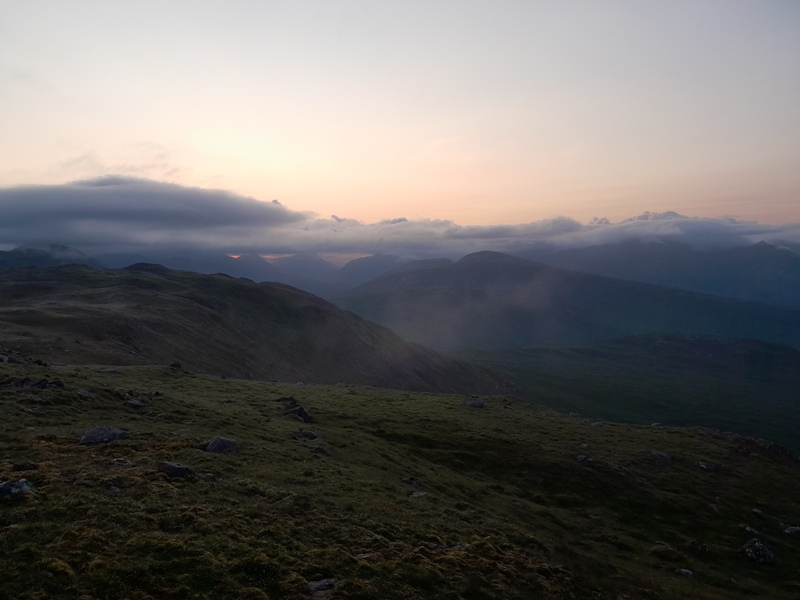
The thing that hit me most with the arrival of dawn, was not the light but the silence. The world felt reborn and it felt like we were the only people in the world witnessing the event.
Around 4:15 am, we could start to see glimpses of pink skies in the little gap below the band of clouds that sat above Buachaille Etive in Glen Coe. We sat and watched the sunrise for another 15 - 20 minutes whilst bands of mist blew over the summit of Creach Bheinn
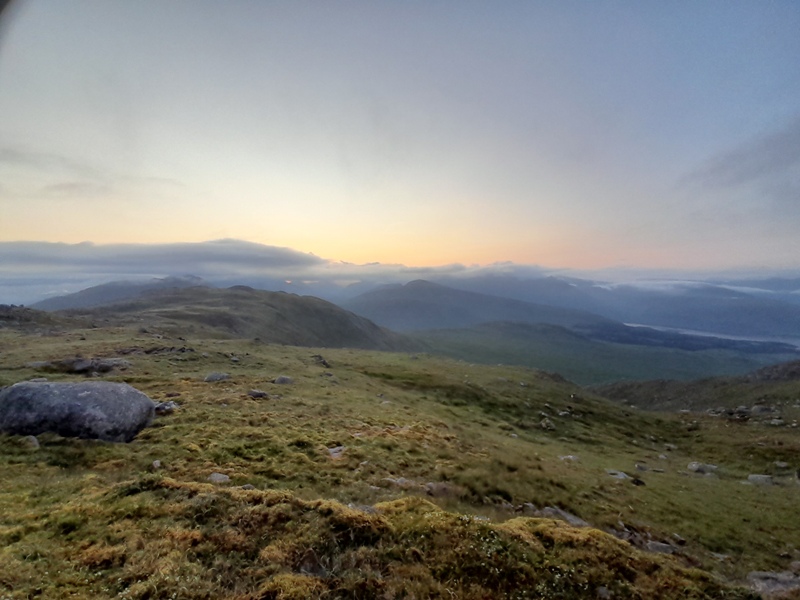
Frustratingly, the full majesty of the sun’s radiance was obscured by the band of distant clouds. But the lack of a spectacular sunrise was compensated for by some magical cloud formations on the mountain tops around Loch Etive. It looked like the clouds were a blanket being slowly pulled away to reveal the scenery below.
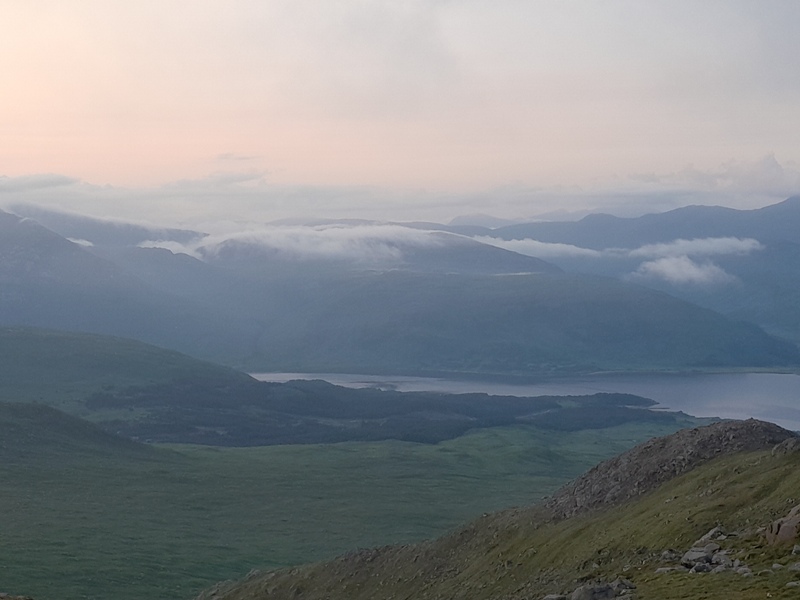
The Descent
This is normally the best part of any hike for me. So much so that my son and I have a song that we sing on our hikes.
Oh, I don’t like going uphill,
I don’t like going uphill,
The down bit’s the best bit,
The up bit’s the daft bit,
I don’t like going uphill.
This time I was a bit less enthusiastic. Maybe the lack of sleep took its toll, but we did go back to bed at 5 am, after watching the sunrise, and managed another couple of hours of shut-eye.
The challenge of this descent was the passing mist and low clouds which sometimes obscured the path, so you had to concentrate more than usual to keep heading on the right bearing.
I normally reckon the time for the descent is roughly half the time taken for the ascent if going via the same route. In this case, we took 3 hours going up and about 2 hrs 30 mins coming down. In saying that, we were in no rush and took several breaks to photograph the scenery and wake ourselves up by sticking our faces in a cold mountain stream.
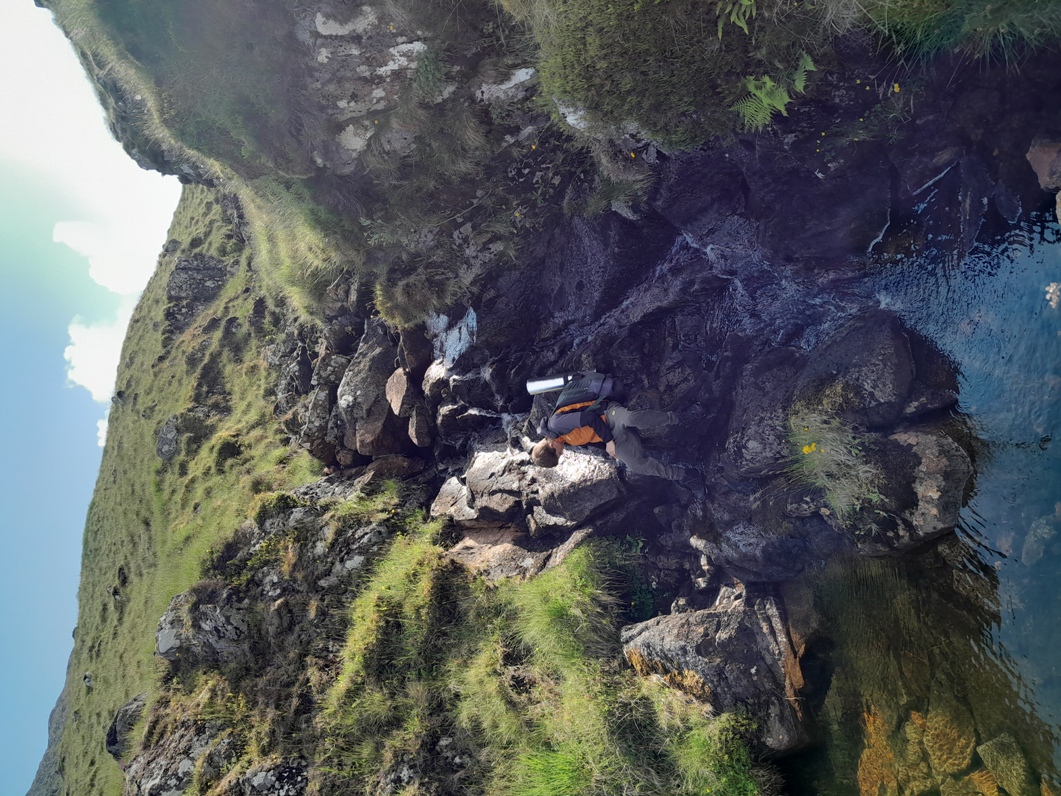
Once back at the car, we were glad to freshen up as best we could from our water bottles, put on clean clothes and slurp down some fresh orange juice before heading for a light breakfast. Despite 16 hours since our last meal and 5.5 hours of hiking, we still weren’t feeling hungry.
We were back home almost exactly 24 hours after we left. One item ticked off the “Bucket List”, the next task was a hot shower followed by a nap in a comfy bed.
Is it Worth the Effort?
YES, if you can, do it!
It’s not easy and you will be uncomfortable during the night. I reckon we got about 3 - 4 hours of decent sleep. But you won’t regret doing it.
The best part of the experience was the dawn. There is something magical about being so alone in the wild and being able to look down on the sleeping world in the shadows below.
But Scotland has lots of special places where you can feel that magic of being alone in a timeless landscape. You just need to be in the right place at the right time with an open mind.


